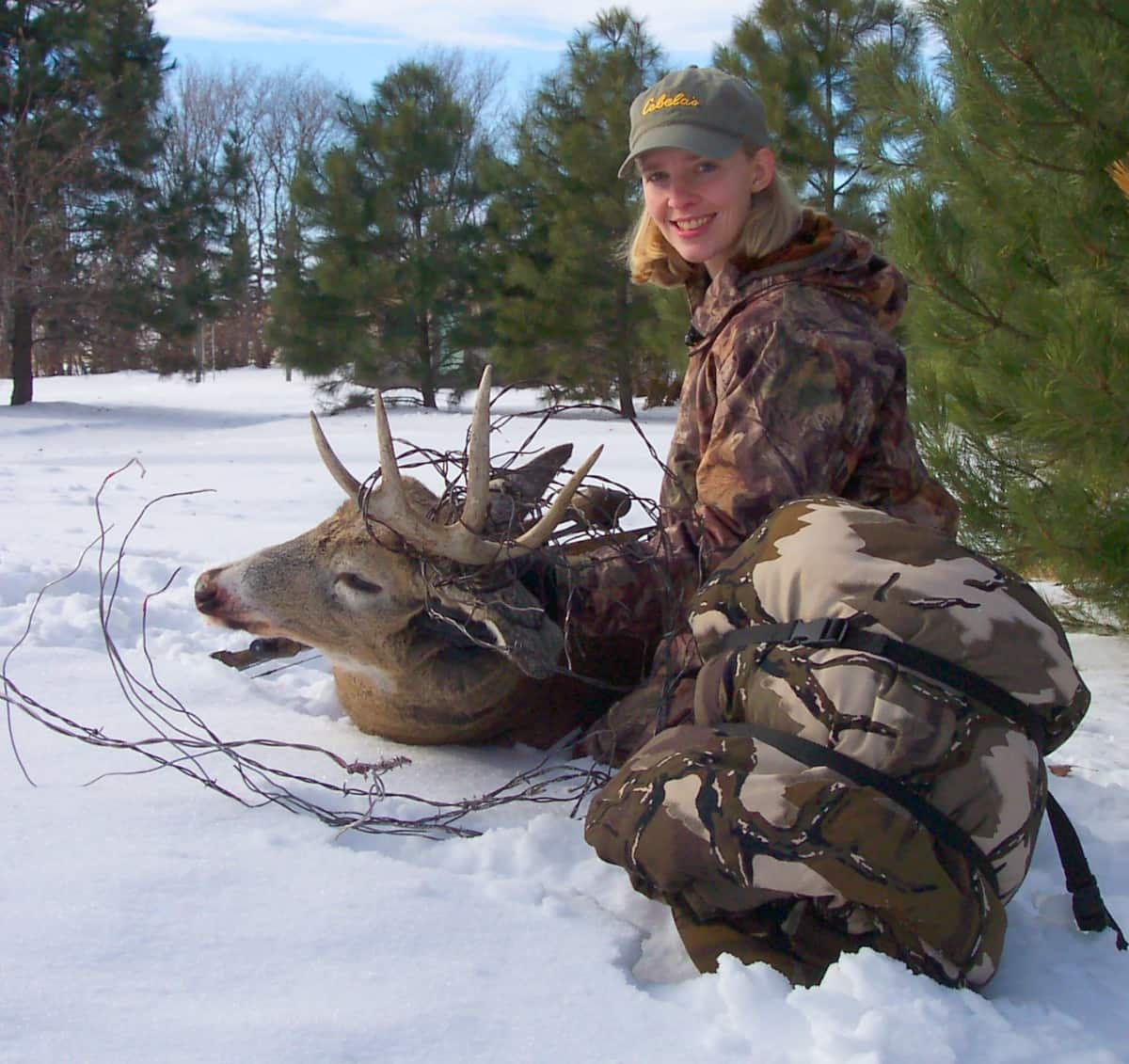16-Year Field Test: The Heater Body Suit
Dave Maas 11.28.17

If you’re still pursuing whitetails in the Midwest or North, then you know that staying warm on stand can be a supreme challenge. In fact, your ability to sit long enough while waiting on a whitetail is often the difference between punching a December deer tag or choking down tag soup.
For the past 16 years, I’ve bowhunted winter whitetails thanks in large part to a made-in-the-USA Heater Body Suit. Most of my time is spent in Minnesota, South Dakota and Wisconsin, and when I say “cold,” I mean cold. (My wife loves bowhunting in her Heater Body Suit, too. That’s her in the pic above with a deer she named “The Barbed-Wire Buck.”
Below is a photo of me with a mature doe. No big deal, right? Anyone can kill a doe . . . or can they? Here’s what I wrote on Facebook after arrowing that big doe on one especially memorable December 23:

“It’s all about the degree of difficulty; let me explain. I shot this magnum South Dakota doe at 10:40 a.m. on December 23. Air temp was minus 19 degrees, with north winds of 20 mph. According to the modern wind-chill calculator, it felt like minus 47 degrees. And for those of you old enough to remember the previous wind-chill chart, it felt like minus 65. Regardless of the actual number, it was freakin’ cold! I hiked a quarter-mile through 10 inches of fresh powder to reach my river-bottom ladder stand. I piled my Heater Body Suit and bow into a trapper’s sled to ease my workload. I climbed into the stand at 7:15 a.m. During the next 3 hours, I had several deer bed around me, but I didn’t want to shoot a fawn or a small buck; I waited for a close-range broadside shot at a fully mature doe or buck. And I finally got it. Shot distance was 9 yards, and my broadhead slipped through her lungs and heart. She ran only 50 yards. I loaded her into the sled, along with all of my gear, then slowly hiked out. I could pull the sled only 20-30 feet each time before having to stop to rest. Thank God I didn’t die of a heart attack. Note: Check out my pink arrow; that’s what happens when blood ‘flash freezes’ in extreme cold.”
As explained in my quote above, you climb into a Heater Body Suit after reaching your treestand or ground blind. It allows you to dress for hiking without getting wet from sweat, which is absolutely critical for staying warm in cold conditions. Basically, you dress as if you were going for a walk in the winter. So depending on the conditions, this might mean just a few layers, or it could still mean a significant number of layers; it all depends on the air temp and wind. The one constant, however, is that after you arrive to your destination, you zip into a Heater Body Suit (think quiet sleeping bag with legs) and you can sit for as long as you desire.
Through the years I’ve learned that the other keys to staying comfortable on stand include wearing a warm neck gaiter, a form-fitting facemask, and two stocking caps (a thick one over a thin one).

When a deer arrives, you simply – and quietly – unzip the Heater Body Suit to your waistline, (the suit stays near your shoulders thanks to its interior straps), reach for your bow or firearm, and then take the shot. Sure, you feel a rush of cold air after you partially unzip the Heater Body Suit, but because you have fairly warm clothes on under it, you have no problem staying comfortable until shooting or passing on an animal.

If you’ve never tried a Heater Body Suit, I urge you to do so. You won’t be sorry. I own extremely warm bibs and parkas, and I depend on them for much of my fall and early winter hunting, but when it gets REALLY cold in mid- to late-December, I won’t – really, I CAN’T – go afield without my Heater Body Suit. Period.

Check out the video below to see exactly how a Heater Body Suit works.
P.S. The Heater Body Suit makes a perfect Christmas gift, too!

